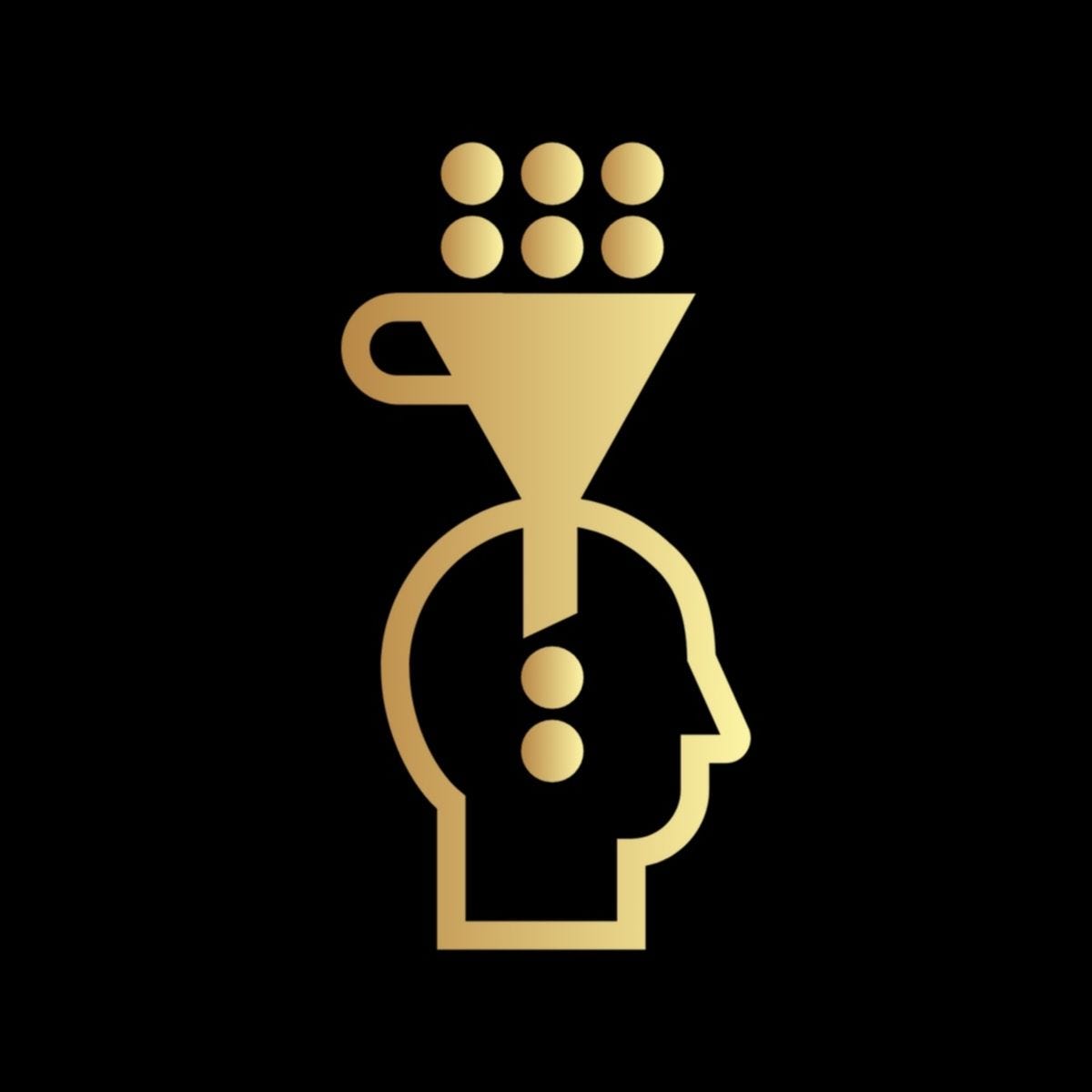☀️☕️ GREEDFLATION is eating YOUR lunch!
📊 Also: UK Clouds over Microsoft + Activision; Hong Kong/China; 🎓 Producer Prices vs YOUR Inflation

Happy Thursday!
📝 Focus
GREEDFLATION is eating YOUR lunch!
📊 In the Markets
UK Clouds over Microsoft + Activision
Hong Kong/China
📖 MoneyFitt Explains
🎓️ Producer Prices vs YOUR Inflation

📚 What We’re Reading

The Pith
Concise summaries of insightful knowledge from top thought leaders, along with actionable tips to help you form life-changing habits in 5 minutes or less.

📝 Focus
GREEDFLATION is eating YOUR lunch!
Huw Pill, the UK central bank’s chief economist, is being roasted by the Twitterati for sounding a bit tone-deaf by saying in a podcast that households and businesses “need to accept” they are poorer. He did NOT say: “Poor people, just suck it up!" What he DID say was to stop seeking pay increases AND pushing prices higher in a game of “pass the parcel” from BOTH sides, even though it's quite natural to want to do so. In the UK's case, he said the cost of what it imports --natural gas-- has shot up compared to what it exports --services-- so everyone is worse off. His point is that everyone will be even worse off if inflation flies further out of control thanks to the wage-cost spiral. What he didn't highlight, though, was that for some time, businesses have been doing most of the pushing. The first wave of inflation was pandemic-disrupted supply + stimmy cheques + reopening, leading to soaring demand for consumer goods. Then, as that inflation shock was easing, Russia turned off gas supplies to Europe, driving up wholesale energy prices by over 1,000%.
“The third wave is about profit expansion... Resilient consumer demand (funded by savings and credit card borrowing) allowed firms to expand margins, and customers have been sold a story that the price increases are justified."
Paul Donovan, UBS Wealth Management.
“The three waves of US consumer prices" 13-Dec (video update with Lego!)
..... ▷ Back in mid-December (alongside our first mention of ChatGPT!) we wrote a short Focus piece called "Profitably Inflationary" about how Pill's boss, the Governor of the Bank of England, “was worried that companies would keep raising prices too fast for too long, suggesting (perhaps) that inflation was increasingly company profit margin driven and (perhaps) not all the fault of nurses, meteorologists, railway workers, postal workers, immigration agents, bus drivers, ambulance drivers, civil servants, firefighters and charity workers... all of whom are either currently on strike in the UK or planning to be."
..... ▷ First quarter results rolling in now are showing that consumers, beaten down and acclimatised to ever higher costs (supply chain, energy) leading to ever higher prices, are still meekly accepting price hikes from most of their favourite brands. CEOs happily state "the consumer remains resilient" while warning bleakly of ongoing cost pressures, if at a slower pace... even while input costs come down, especially freight and energy. (To be fair, some raw material inputs could have been stock-piled at higher prices, but those roll off this year.)
“The consumer remains resilient”
Michael Hsu, chair and chief executive of Kimberly-Clark (Andrex toilet rolls, Kleenex tissues)
..... ▷ Central bankers are watching the “Greedflation” in the system with increasing alarm. When will consumers notice, and which brands, if any, will they punish when they do?
MORE DETAILS: Nestlé, the world’s biggest food company, hiked prices by an average of 10% in the first three months of 2023, a record rate, yet only saw sales volume down 0.5% (its 2,000 brands include Nescafé, KitKat, Maggi, Milo and Purina.) Coca-Cola Co (Sprite, Fanta, Costa Coffee, Minute Maid, Schweppes) raised average selling prices by 11% in the first quarter, while rival PepsiCo, (with Pepsi-Cola, Doritos, Gatorade and Quaker Oats among its 300 brands) raised prices by 16% yet sales volume only dropped 2% ("organic revenue growth" was 10% on higher prices.) McDonald’s said like-for-like sales grew 13% partly because of “strategic menu price increases”. Reckitt Benckiser (Dettol, Lysol, Enfamil, Harpic) and Danone (Danone, Activia, Evian, Volvic) also reported sharp price increases even with input costs easing. Primark owner Associated British Foods, though, does not expect many more price increases in the second half as costs, including wheat, vegetable oils, freight and energy, start to fall. Procter & Gamble (Tide, Pampers, Gillette, Oral-B, Crest, Charmin) raised 10%, but volumes fell only 3%, a slower pace than before. Rival Kimberly-Clark (Huggies, Kleenex, Kotex, Depends) was seeing similar trends (and the same pulp price decrease.) Unilever (Lux, Dove, Ben & Jerry's, Lipton, Cif, Knorr), which reports on Thursday, said in February that the industry was past "peak inflation, but not yet past peak pricing".

- Image credit: Fight Club (1999) / 20th Century Fox via Tenor
“For companies, the first rule of price gouging is you do not talk about price gouging. The second rule of price gouging is you DO NOT talk about price gouging." Paul Donovan, an amateur heavyweight boxer.

If you are enjoying The MoneyFitt Morning and would like to continue learning what's important in investing & business, please subscribe!

📊 In the Markets
Strong Big Tech results overnight (GOOGL, MSFT) kept NASDAQ up while ongoing worries over troubled rich Californians' bank First Republic, which dropped another 30% after halving on Tuesday, kept things a bit bleak for the rest of the market. Microsoft (see below) was up over 7% to hit a 12-month high, though Google-parent Alphabet closed flat. Good cloud performances from both led AWS-owner Amazon up 2%. Meanwhile, shares in $55bn Mexican food chain Chipotle popped up 13% to an all-time high on an 84% rise in earnings.
..... ▷ After the close, Facebook owner Meta reported results much better than expected by Wall Street's highly-paid analysts, with sales growth of 3%, the first quarterly growth in a year (though profits still dropped a quarter.) Meta shares took off in aftermarket trading, rising almost 12%.
The HK/China markets ended Wednesday mixed, with Shenzhen up 0.33%, Shanghai 0.02% down and Hong Kong’s Hang Seng Index up 0.7% after a brutal few days of selling that followed China's stronger-than-expected 4.5% first-quarter economic growth. Many casual observers were excited over the numbers, but more seasoned investors seemed to doubt the sustainability of the rebound (not to mention the accuracy of the numbers.) Others felt that strong numbers implied less support going forward (and a lower likelihood of rate cuts to spur further growth.)
..... ▷ Since April 18th, the combined China indices have together lost almost RMB3.6tn ($519bn) in market capitalisation (share price X number of shares in each company, all added up.) The market cap of companies in the Nasdaq Golden Dragon Index (HXC), which tracks the biggest US-listed Chinese companies, dropped by over $30bn over the same period.

- Image credit: Tradingview
UK Clouds over Microsoft + Activision
The Competition and Markets Authority (CMA), the UK’s competition regulator, has blocked what would have been the largest acquisition in gaming history, Microsoft buying Activision Blizzard for $68.7bn. Activision Blizzard is the developer behind games such as Call of Duty, World of Warcraft, Hearthstone, Candy Crush Saga and Overwatch, while Microsoft is building a huge stable of first-party developers, has its own consoles, Xbox, and basically controls PC gaming. With the acquisition, Microsoft would still only be the third biggest in the gaming industry (FOR NOW), behind China's Tencent and Japan's Sony.
..... ▷ The CMA decision had earlier in the month seemed positive for Microsoft when it said it was happy with promises to make Call of Duty available on other platforms for at least a decade, preserving competition in the console market. Sony, the owner of Playstation, was incensed. This might have indirectly influenced the decisions of the UK's fellow trustbusters in the US and EU (see December MFM.)

Cloudy in Seattle - Image credit: Tenor
..... ▷ But it was Cloud Gaming that tilted it the other way! The CMA decided that the fast-growing cloud gaming space, where users stream video games to play on their phones or TVs WITHOUT needing specialised hardware (consoles, gaming PCs), was the bit of the market that would be monopolised if the purchase went through. Microsoft, which has a 60-70% share of cloud gaming services, has a subscription service, Xbox Cloud Gaming. For a single monthly fee, users get access to many of its first-party titles and the CMA concluded that Microsoft was likely to include Call of Duty in the bundle (which would definitely have been the right business decision.)

Brits, seen here dealing with a certain Redmond, Washington, tech company. - Image credit: Call of Duty / Activision Blizzard (not Microsoft) via Tenor
..... ▷ Microsoft will appeal, though observers are calling GAME OVER, and warned ominously that the decision “discourages technology innovation and investment in the United Kingdom”. More pertinently, it said the CMA’s decision reflected “a flawed understanding of this market and the way the relevant cloud technology actually works.” (Microsoft signed 10-year licensing deals with streaming services including Nvidia’s GeForce Now service and Boosteroid, and argued that owning Activision would expand rather than restrict the availability of the Activision’s games. It also planned to make Call of Duty available on Nintendo’s Switch.)

📖 MoneyFitt Explains
🎓️ Producer Prices
Producer Price Indices (PPIs) are a measure of inflation in the prices of goods and services sold by producers. Consumer Price Indices (CPIs) measure the average change in the prices paid by consumers for a basket of goods and services.
(PPIs measure the prices of goods and services at the wholesale level, while Consumer Price Indices measure the prices of goods and services at the retail level.)
They are important because they provide an indication of the direction of the economy, and can be used to make decisions about pricing, production, and investment.
The impact of producer price indices on consumer prices is indirect, but it can be significant. When producer prices go up, businesses typically pass those costs on to consumers in the form of higher prices for goods and services. There is often a lag between when producer prices increase and when consumer prices increase, but the two are usually closely linked over time.
In other words, the impact of producer price increases on consumer prices may not be immediately apparent but may become more evident over time as the higher costs are passed down the supply chain.
🎓️ Inflation
Inflation is basically a general increase in prices in an economy over a period of time.
When this happens, the value, or purchasing power, of money goes down. Inflation is usually caused by too much demand for something relative to how much is available, or by the cost of producing (or importing) something going up. Both can lead to a vicious cycle of rising prices, usually when higher prices become expected.
The Consumer Price Index is a way of measuring inflation in an economy based on the increase in the overall price of a "basket" of items that an average individual would spend on.





